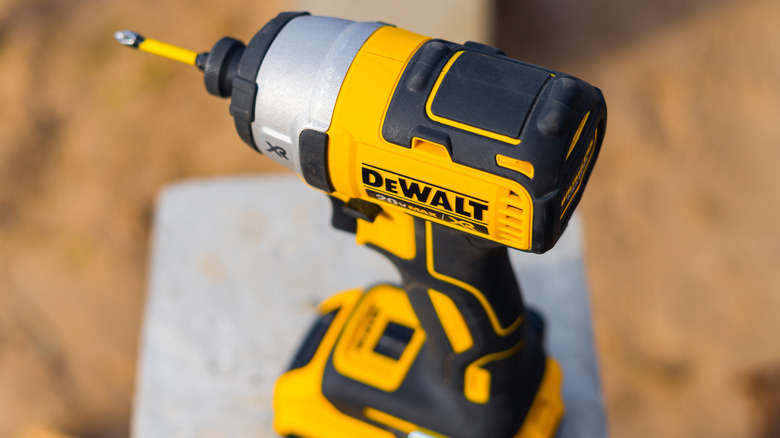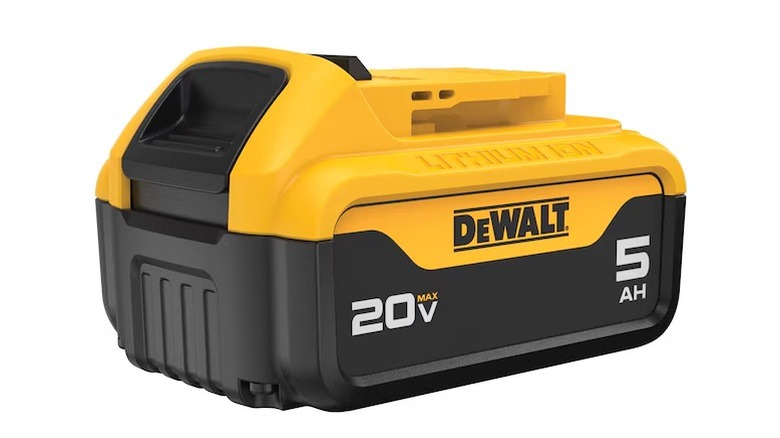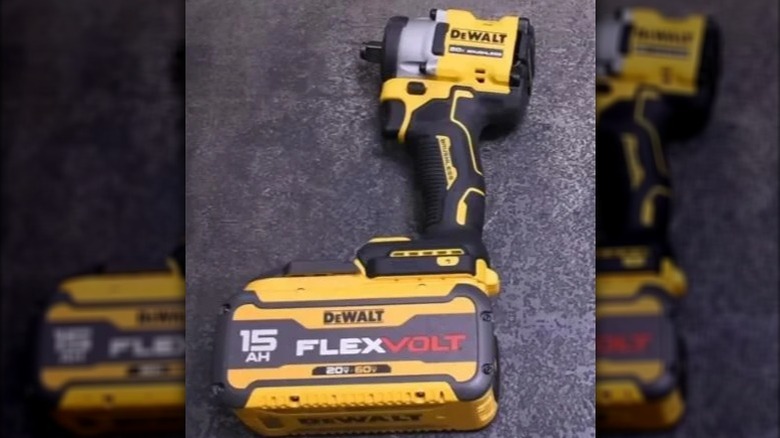This DeWalt Battery Amp Hour Is The Most Recommended By Users
We may receive a commission on purchases made from links.
When it comes to power tool batteries, there are usually two numbers that you want to keep in mind: The voltage and the capacity. Voltage refers to the amount of power being sent to the tool at any given time. Most power tool on the market requires a specific voltage in order to operate. This means that they need to be paired with a battery of that same voltage, or they simply won't work. There are some exceptions to this rule, however. DeWalt, for instance, currently has four battery lines, and while 12V Max tools require 12V batteries, 20V Max tools require 20V batteries; the company also has an entire Flexvolt line that runs using batteries that are able to switch between a 20V and 60V current. There are also the 120V Max tools that can run using two 60V batteries.
The other figure that you need to keep in mind is the amperage, which is easily identified as it has an "Ah" at the end of it. This stands for Ampere-Hour–a unit of measurement for the amount of energy stored in a battery, calculated by identifying how many amps of current it would be able to pass in an hour. This means that a battery with a 2Ah capacity should only last about a third as long as a 6Ah battery under the same load.
All of this might lead DeWalt users to wonder which of the batteries in the company's current lineup is the best option for their power tools. While different capacities may be better suited to different use cases, DeWalt users agree that the 5Ah battery is one of the more well-rounded options for those who are starting out.
Users agree that the 5Ah battery is a great option for most applications
The best solution for most power tool collectors is ultimately to get a range of batteries at differing capacities, but those who are just starting on a collection of DeWalt 20V Max tools might want to begin with a single battery that serves as a balance between power, longevity, weight, and affordability. For that, most users recommend the 5Ah capacity.
One Reddit user posted a thread asking other DeWalt users which battery size would be ideal for long-lasting performance across the 20V Max battery line. There were a few different responses, but the overwhelming majority seemed to agree that the 5Ah battery hit that sweet spot perfectly. "The standard 5Ah battery is a solid choice all around for size:power:runtime:cost," said the top-voted commenter. "If you want more power but still a manageable size, go for the 5Ah Powerstack, 6Ah FlexVolt, or 6Ah/8Ah XR." It's also worth noting that the 20V XR batteries are designed to work in tandem with the brushless XR tools to provide longer battery life and more power than the standard 20V Max options.
You can see similar sentiments on Amazon. The basic 20V Max battery has a star rating of 4.7 out of 5 across just under 20,000 reviews. "Good battery," one reviewer stated. "It works well [with] all my DeWalt tools. Keeps a good charge. Not to heavy. Power is there. Design is right. Fit is good." These sentiments are echoed across dozens of reviews.
Different tools may benefit from different capacities
There is no single capacity that is the best option for every tool. You might be tempted to think that the 15.0 20V/60V Max Flexvolt battery is the best option for everything simply by virtue of it being the highest capacity that DeWalt offers and having the ability to operate at two different currents, but there are two main reasons why DeWalt users might hesitate to recommend it (aside from some of the bad reviews it's gotten). The first is that it's fairly pricey. Home Depot is charging a full $419.00 for a single battery. Most users might understandably consider this to be prohibitively expensive.
The second reason is that the battery itself is heavy at 4.55 lbs. This weight probably won't be as noticeable in a piece of rolling equipment, like a lawn mower or a power washer, but it would be very noticeable on a drill, impact wrench, or oscillating multi-tool. The added weight of a massive battery can also make it extremely unbalanced and difficult to wield.
These kinds of tools typically consume less power and can therefore be operated for longer periods without needing to worry about depleting the battery. In these instances, having a lighter and more affordable battery in the 3-5Ah range might be a preferable option. And while batteries of the same voltage should exude the same power, this often isn't the case. Small-capacity batteries often experience a phenomenon called Voltage Sag, which can make the tool feel sluggish and less responsive than it would when using a battery of the same voltage but with a higher capacity.


